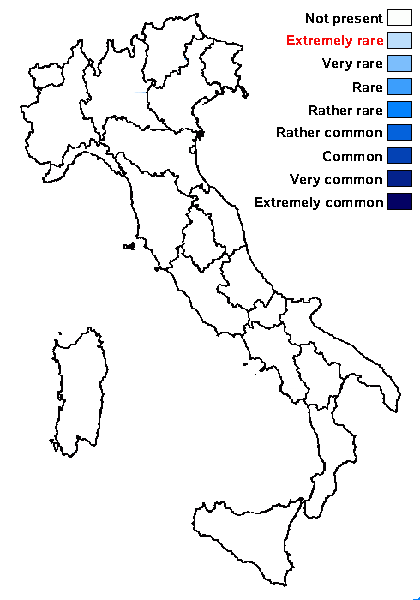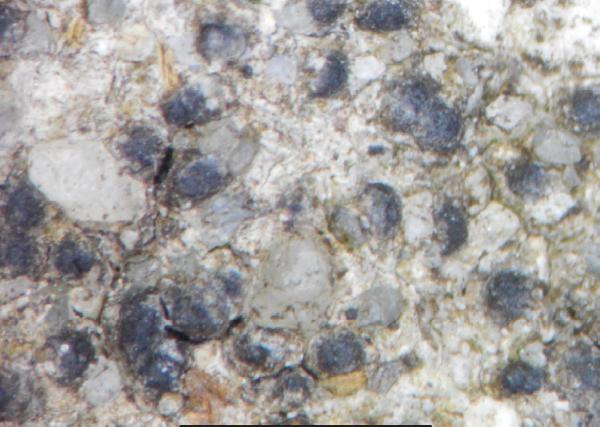Verrucaria banatica Servít
Věstn. Král. České Společ. Nauk, Třída Math.-Přírod., 10: 5, 1948 (1947)
Synonyms:
Distribution:
Description: Thallus crustose, endosubstratic or thinly hemiendosubstratic, continuous to rimose, white, grey, pale brown or pale green. Perithecia black, 0.25-0.4 mm across, almost superficial in specimens with fully endolithic thallus, 1/4-1/2 immersed in those with an hemiendolithic thallus. Involucrellum thin, covering more than half of the exciple and often extending to base-level; exciple 0.25-0.3 mm wide, at first pale, but soon turning brown in some specimens while remaining pale in others; hamathecium of periphyses measuring 30-40 x c. 2 μm, interascal filaments absent; hymenial gel hemiamyloid, I+ red (I+ blue at very low concentrations of I), K/I+ blue. Asci 8-spored, clavate, I-, fissitunicate, the wall thickened above, with an ocular chamber, dehiscent by extrusion of an endotunica to form a delicate rostrum, Verrucaria-type. Ascospores 1-celled, hyaline, ellipsoid, (18-)20-25(-27) x (9-)10-13 μm. Photobiont chlorococcoid. Spot tests: K-, C-, KC-, P-, UV-. Chemistry: without lichen substances.Note: a poorly known calcicolous species also known from the Eastern Alps (Austria), perhaps conspecific with the very similar V. subdolosa. To be looked for in Italy
Growth form: Crustose endolithic
Substrata: rocks
Photobiont: green algae other than Trentepohlia
Reproductive strategy: mainly sexual
Poorly known taxon in need of further study

Predictive model
Growth form: Crustose endolithic
Substrata: rocks
Photobiont: green algae other than Trentepohlia
Reproductive strategy: mainly sexual
Poorly known taxon in need of further study

Predictive model


